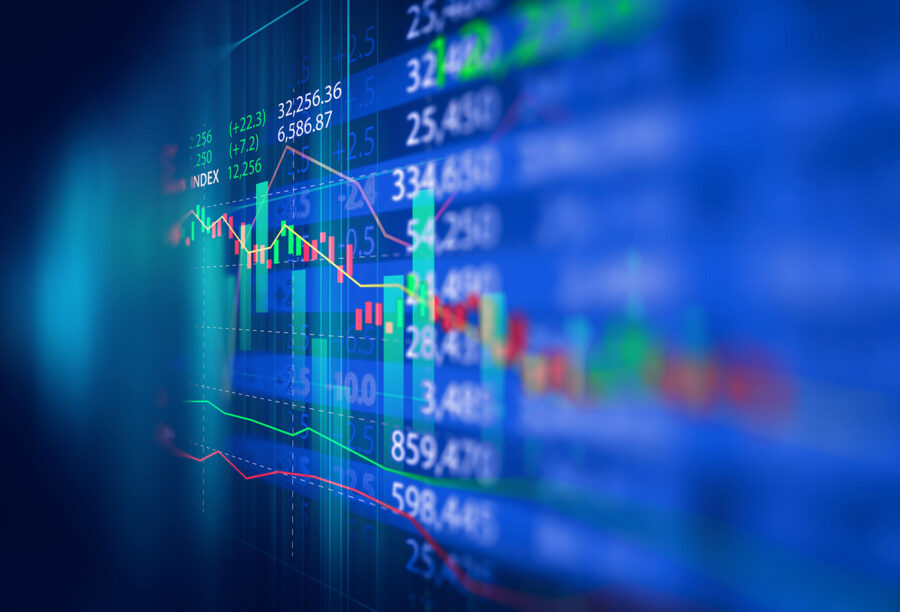

Lessons from a Failed Investment Fund
The Archegos implosion teaches the same lessons that need to be taught repeatedly. High leverage eventually brings margin calls. Margin calls equal disaster. Margin calls come when too much leverage is attached to securities linked to market volatility. All...
Lessons from a Financial Blowup
The Archegos implosion teaches the same lessons that apparently need to be taught over and over again. High leverage eventually brings margin calls. Margin calls equal disaster. Margin calls come when too much leverage is attached to securities linked to market volatility. All securities are linked to market volatility. There is no such thing as uncorrelated assets anymore. Investment strategies founded on the belief that the securities held are somehow immune from previously “uncorrelated” volatility are anachronistic. Combine these investments with substantial leverage intended to enhance returns, and this strategy ends in disaster. If it’s zero eventually, great quarterly performance is meaningless. It’s risk-adjusted return, idiot. Diligence matters. Questioning assumptions and decisions constantly are the table stakes for any investor. The too clever, overleveraged, overconfident manager believes work is done before an investment decision. That’s the beginning, not the end, and a failure to be diligent in a market with many more influences, uncertainties, and factors impacting a portfolio ends, well, the way Archegos ended. Watching carefully and acting quickly, getting out of suddenly unattractive positions, and revising thinking is almost as good as a good investment choice in the first place. Building a portfolio the way Archegos did is not investing. It’s gambling. The most important lesson is to know the difference.

Education and Research
Applied research and academic rigor are a core part of our DNA. We publish research on topics ranging from security valuation, competitive analysis, market conditions, geopolitical updates, technological innovations, market disruptions, and emerging trends. We also...Education and Research
Applied research and academic rigor are a core part of our DNA. We publish research on topics ranging from security valuation, competitive analysis, market conditions, geopolitical updates, technological innovations, market disruptions, and emerging trends. We also...Economics, Advanced Technology, and Social Media
Fundamental drivers for pricing valuations in public markets have changed. Now, there is a new interaction among factors unseen just recently. Advanced technologies such as artificial intelligence have had a profound impact on the tools available and analysis presented to even the most amateurish investor. Social media, such as Reddit, Twitter, and other platforms, have allowed access to information and influence from media “stars” driving demand in an almost herd-like mentality driving up prices, and causing extreme volatility. Finally, technology has enabled a trading floor to be in everyone’s pocket. That same trading floor allows access to any information on anything from anywhere, and communication with anyone or, via social media, receive communication and information (regardless of how dubious) from anyone about any security or investment strategy.
These factors will cause unprecedented market volatility, along with extreme price movements for well-known (or perhaps more accurately, well-publicized) companies and their securities. While the supply of securities remains somewhat constant, demand for those securities is increasing (sometimes exponentially) because many more investors are now chasing those same securities.
The price of anything cannot escape supply and demand dynamics. Recent IPO activity is an attempt to meet growing demand (and raise capital at attractive prices). The new supply from IPO’s, secondary stock issuances, and most recently and monumentally, SPAC offerings, still do not provide enough supply to quench a growing and overwhelming demand. The valuations, especially those given to the SPAC’s, are entering stratospheric levels that could hardly be justified under normal market conditions. While there is plenty of capital, most assets seem fully priced with an under-estimation of risk. There are alternative investments where higher returns without the same commensurate increase in risk are available. Some return is simply mispricing of securities through lack of attention (those starved from social media can create meaningful opportunities for those savvy enough to look for them) or liquidity.
Successful investors are the ones who understand adding return without corresponding risk is the most critical component of successful investing, especially given the new equation for valuation:

Time to Worry
When Everything is Going Great, It Probably Isn’t.
Things can only get better from here… said the turkey the day before Thanksgiving. It’s challenging to know when it’s too late because things go badly gradually, then suddenly.
It might be time to start worrying about tech-stock valuations. Usually, all it takes is a few overly ebullient stock analysts to set off an alarm. When unreasonableness takes over (remember all those analysts’ reports from March 2000? The NASDAQ could only go up and all those internet funds were going to double again in 2001?). In March 2000, the bellwether for this nonsense was Henry Blodget’s recommendation of Amazon with a target price of $400.00 by March 2001 (at the time Amazon was trading for about $60.00 a share). Instead of being $400.00 in March 2001, Amazon’s price was $5.97 per share.
Long Term Value Means Long Term
Of course, Amazon has created an amazing business model and is fundamentally rewriting technology services and customer logistics. Trading at almost 100 times earnings the market believes there is much more growth and profitability to come. Really? Regardless of your perspective about that, Amazon is an example of investments that are either “don’t bother it’s ridiculous” or “never sell it’s ridiculous.”
The market may stay permanently irrational about companies like Amazon, or Amazon may catch up to the market’s irrationality. What should an investor do? The answer is simple – don’t play. By that I mean you either buy the stock and ride the tiger (which means you can never get off – or sell) or stay out of the jungle completely – don’t ever buy. Half measures rarely have good outcomes.
Amazon is exemplary. This tiger has rallied substantially since those woeful days in March 2001 to close above $3,200 per share in February 2021. So, even if you listened to the absurdity belched out in March 2000, and on paper, had substantial losses from your Amazon investment for several years, if you held on, you are brilliant and rich (more like lucky; but it’s smarter to be lucky than lucky to be smart). Don’t listen to the analysts and don’t get off.

Think Differently
Is It Really Different This Time? Well, sort of – and that makes all the difference. Interest rates are at zero, and worldwide markets assume that will change little for some time to come. Global coordinated monetary and fiscal policy are spiraling interest rates to this flattened level with little prospect of upward movement. The combination of monetary, fiscal, and interest-rate policy coordinated in this manner is unprecedented and is being pushed to its limits. A subliminal fear may be permeating the markets, generating extreme movements, causing both substantial profits and losses from massive capital flows magnifying price movements within compressed time frames. How do we explain this, and more importantly, how do we predict and profit from it? Bitcoin Explains Everything – Read That Twice If You Need To

Uncertainty and Prediction
The world economy is an infinitely complicated web of interconnections. We each experience a series of direct economic interrelationships: the stores we buy from, the employer that pays us our salary, the bank that gives us a home loan, etc. But once we are two or three levels degrees separated, it’s impossible to really know with any confidence how the connections are working. That, in turn, shows what is unnerving about the economic calamity potentially accompanying the coronavirus.
In the years ahead we will learn what happens when that web is torn apart when millions of those links are destroyed all at once. It opens the possibility of a global economy quite different from the one that has prevailed in recent decades. Or, as John Kenneth Galbraith has said, “we have two classes of forecasters: those who don’t know and those who don’t know they don’t know. “The bottom line is establishing and maintaining an unconventional investment profile requires acceptance of uncomfortably idiosyncratic portfolios, which frequently appear imprudent in the eyes of conventional wisdom. We are entering a new world and must think differently.
